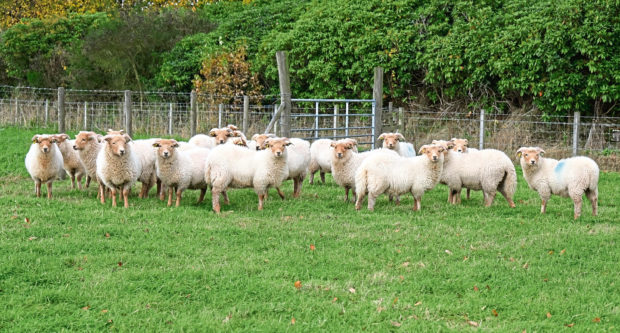The floppy-eared, gap-toothed Large Black pig wallowing in a muddy field is the first indication that Martin Beard practises what he preaches.
The chairman of the Rare Breed Survival Trust’s (RBST) new Scottish forum also has a few camouflaged Oxford, Sandy and Black pigs rooting around in autumnal leaves and a flock of Portland sheep grazing on his Angus smallholding. Elsewhere, there’s an ageing Golden Guernsey goat and a few Light Sussex hens.
However, Martin, an international marketing professional, is adamant that while his choice of livestock breeds are far from the norm, they are commercially viable and the end products – particularly the Portland mutton curry sausages – are in great demand at Arbroath Farmers’ Market.
He has been a lifelong supporter of the RBST but only took the leap into small-scale farming when he moved to Angus seven years ago and he is now determined to raise the profile of endangered livestock and ensure the Scottish Government takes them and their potential future role seriously.
“We may be doing it on a very small scale here but we are hard-nosed and aim to sell the meat,” he said.
“The message I’m trying to get across is that these rare breeds are low input, they can be commercial – and they are often ideal as conservation livestock.
“We recognise few people are likely to turn over their entire whole herd to native or rare breeds, but if they want to diversify and sell direct – which the pandemic has shown there’s a growing interest in – these breeds are an obvious way forward.”
Martin is also involved in the Appetite for Angus food network and the Angus Tourism Co-operative and says the groups have lists of producers who are keen to capitalise on the trend of consumers reconnecting with their local food chains.
“Rare breeds can definitely be part of that and they achieve a premium,” he said.
“Markets need different niches in order to function properly and in food production there are lots of different niches.
“We don’t all want the same bit of beef wrapped up in the same way where the price tag is the only difference – that’s not a sustainable position.”
It’s an argument he has taken to the Scottish Government.
“As we look beyond the government’s stability and simplicity position to the next iteration of agricultural support, we would like to see an element in there which would reward farmers and smallholders for keeping native breeds and equines,” he said.
“We are pushing hard for that because it could make the difference between keeping rare breeds or not.
“From our meetings to date, I think ministers understand the issues and are receptive to ideas, because sustainable development goals encompass not just native plants, but native breeds as well.”
When pushed to specify Scottish breeds that are in trouble, Martin says the native equines – Highland ponies, Eriskays and Clydesdales – need to be carefully monitored, along with native Aberdeen-Angus, White Galloways, Shetland cattle, North Ronaldsay and Soay sheep.
The RBST may have had a largely English focus in the past, but the Scottish forum looks certain to raise the profile of Scotland’s heritage livestock.










